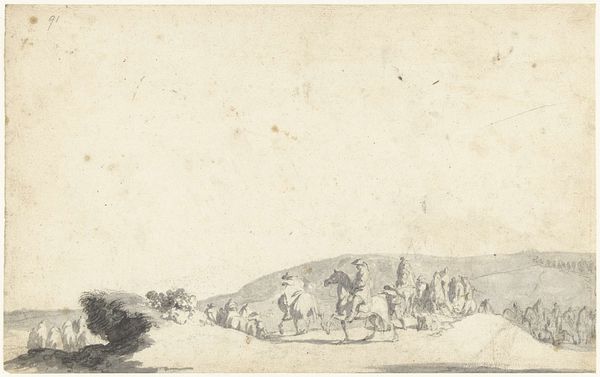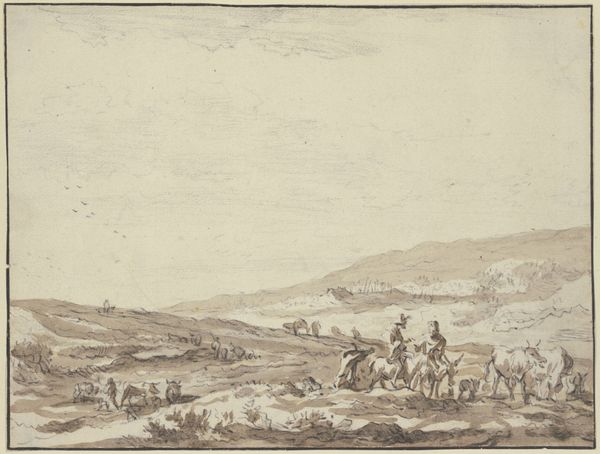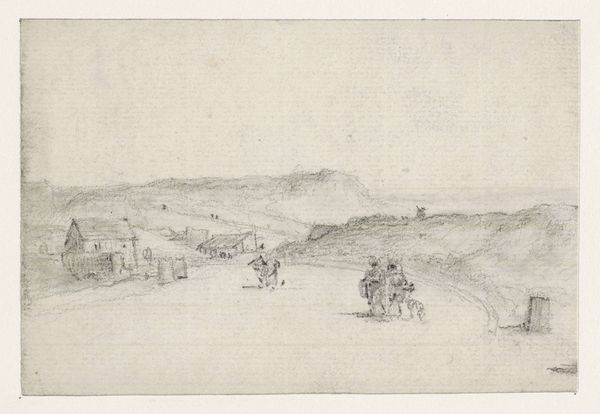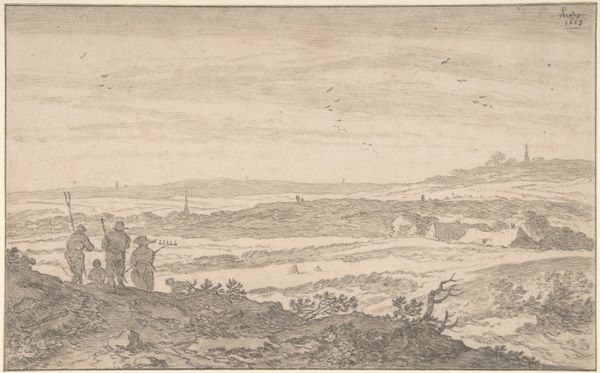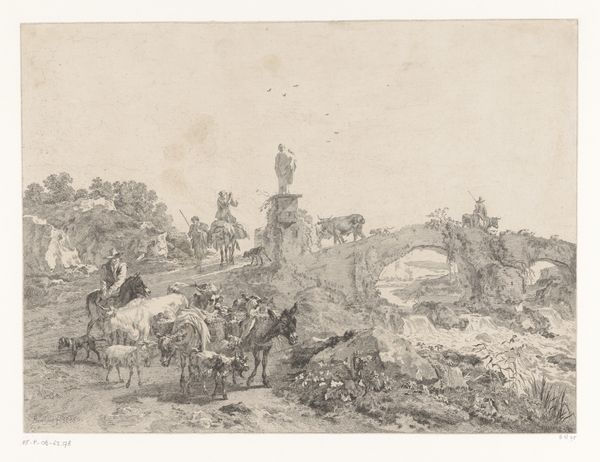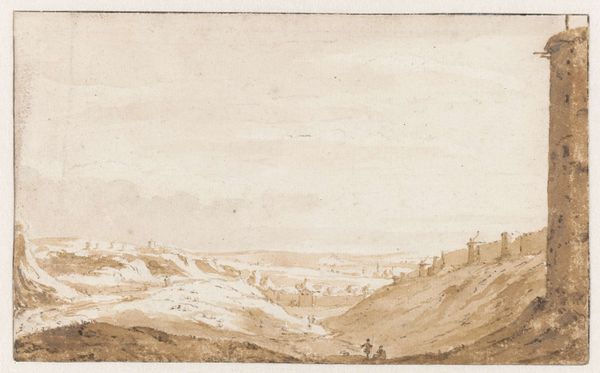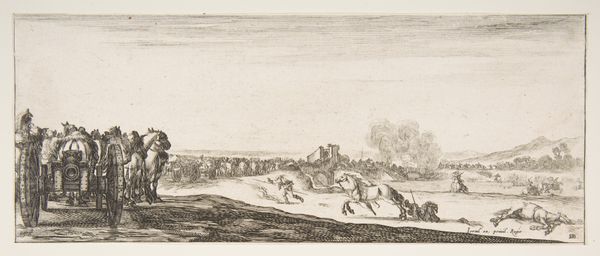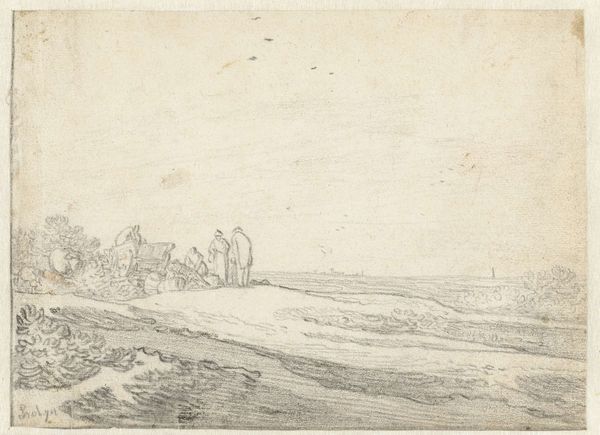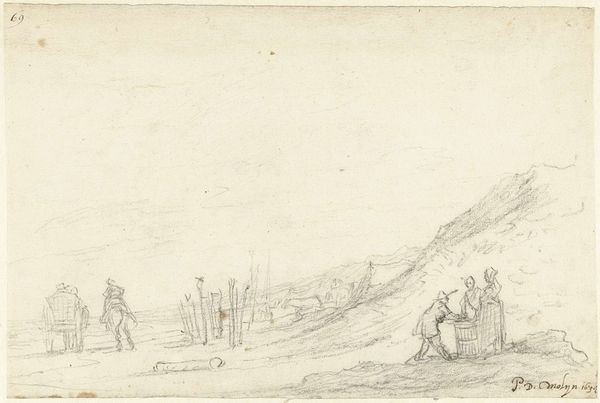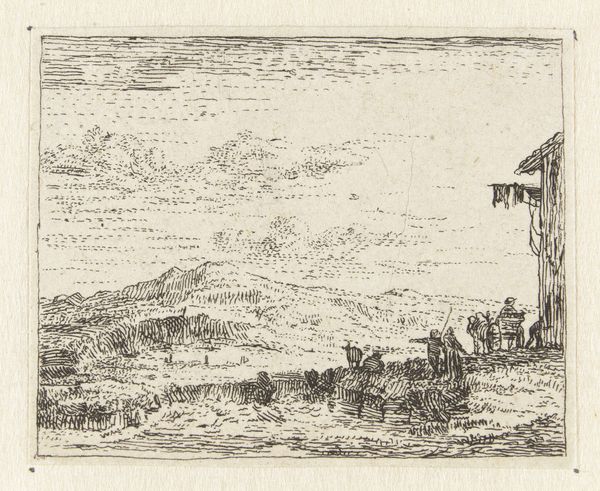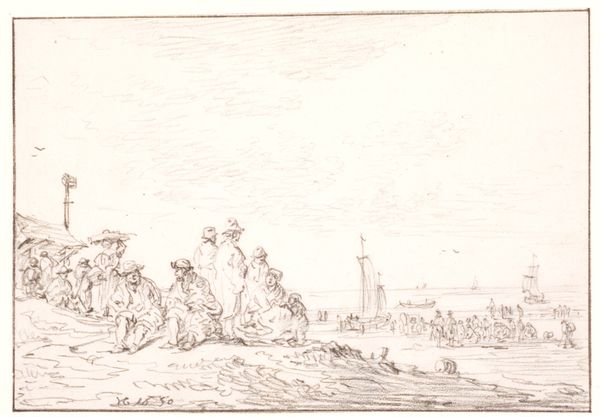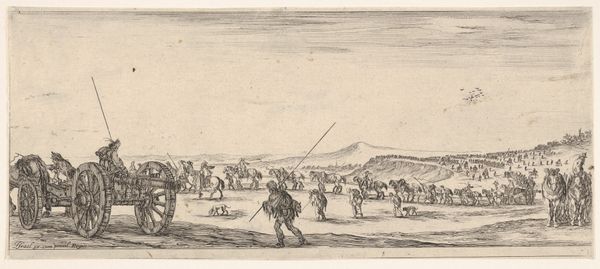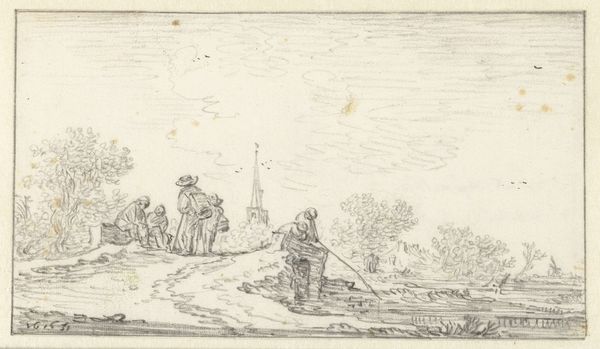
Two Sketches of Figures on the Dunes near Scheveningen Possibly 1660 - 1666
0:00
0:00
drawing, paper, ink, pencil
#
drawing
#
aged paper
#
toned paper
#
light pencil work
#
dutch-golden-age
#
pencil sketch
#
sketch book
#
landscape
#
figuration
#
paper
#
personal sketchbook
#
ink
#
pencil
#
sketchbook drawing
#
pencil work
#
genre-painting
#
storyboard and sketchbook work
#
sketchbook art
#
realism
Dimensions: height 96 mm, width 151 mm
Copyright: Rijks Museum: Open Domain
Curator: Ah, look at this! This drawing, "Two Sketches of Figures on the Dunes near Scheveningen," possibly dating from 1660 to 1666, is by Jan de Bisschop, here at the Rijksmuseum. It’s a charmingly understated piece, rendered in pencil and ink on paper. Editor: My immediate reaction is one of profound melancholy. The tonal paper lends a sepia wash, a feeling of something receding into time, like a fading memory of laborers going about their day. Curator: You know, I often wonder about those figures. Are they simply observed, or is de Bisschop embedding something of his own narrative here? Given the period, there’s a lot of societal commentary one could weave in. Editor: Precisely. Look at the way they're positioned in the landscape—almost swallowed by it. The prominence of the dunes raises questions of social hierarchy. Who owns the land? Who toils upon it? What are the power dynamics at play? Curator: That’s a valid reading, certainly. But there’s a certain… tenderness, too, don't you think? A softness in the rendering, a human connection between the artist and his subject. These aren’t posed portraits, they are genuine glimpses into the lives of people. Editor: A tenderness perhaps, but a qualified one. The swiftness of the sketch—note the 'light pencil work'—implies transience. Lives lived, perhaps, only to be swept away by the next tide, or perhaps simply neglected and abused by landowners. The casualness of the technique belies the precarity of existence of working classes. Curator: Hmm, yes. There’s an undeniable sense of life's impermanence, certainly. But also a feeling that, for de Bisschop, observing and capturing it held significance in and of itself. The drawing as a kind of preservation. Editor: I agree that it's significant. It’s a valuable record, revealing a snapshot of life in the Dutch Golden Age. It serves as a reminder that we can gain insights even from the simplest of sketches about the complexities of human relationships, social conditions, and historical forces that are continuously shaping individual lives. Curator: Yes, precisely. A brief, perhaps fleeting, encounter that opens into a wide world of interpretation and introspection. Editor: An understated and, indeed, affecting artwork for which I am all the more grateful after our little exchange.
Comments
rijksmuseum about 2 years ago
⋮
De Bisschop covered Charles II’s departure to England like a news reporter. He recorded the momentous event in swiftly executed sketches in black chalk, which he later worked up in pen and brush. These sketches served as the foundation for the large finished drawing also on view here (adjacent).
Join the conversation
Join millions of artists and users on Artera today and experience the ultimate creative platform.
